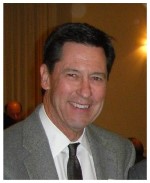FEATURED PAPER
By Walt Lipke
Oklahoma City, Oklahoma, USA
Abstract
Generally, quality assurance (QA) functions are sized at the direction of management and are rarely sized commensurately with their need. Over the years, influenced strongly by in vogue attitudes and real-world circumstances the size of the QA function has exhibited extremes:
- Inordinately large after an embarrassing product failure, or an executive’s overreaction (in the distant past, from attending an Edwards Deming seminar), or
- Completely eradicated when perceived to be unneeded, or too expensive.
This article introduces quality efficiency indicators, which facilitate adequate sizing of the quality assurance function; i.e., sizing QA to the customer’s need, or the producer organization’s own quality goals. The interpretation and application of the indicators is explained, and a simple example is provided demonstrating the calculation for sizing the QA function. (A basic knowledge of Statistical Process Control, and statistics, specifically Confidence Interval, is helpful to the understanding of this article.) The quality assurance sizing process presented is broadly applicable to various industries and processes. The method presented in this paper assumes there is a semi-smooth flow of performance effort, and the requirement for quality assurance is not sporadic.
Introduction
After World War II the United States (U.S.) was the predominant industrial nation in the world. The U.S. produced. The world consumed. The quality of the U.S. products was of little concern; they would sell regardless. This economic position was held until about 1970 after which the market for U.S. products declined.
Beginning with the post-war reconstruction, Japan’s business leaders learned and adopted manufacturing practices the U.S. utilized during and prior to WWII. Most notably, the Japanese were taught the methods of quality by W. Edwards Deming. As Deming had prophesied to Japan’s leaders, economic growth came from their dedicated use of the techniques he had learned from Walter Shewhart at Bell laboratories.
During the 1980s Japan’s automobile industry began to make noticeable inroads into the U.S. market. Their success was an alarming wake-up to U.S. manufacturers, who recognized that they truly had serious competition. Thus began the quality revolution in the United States.
No longer was quality perceived as an expendable portion of the production process and largely ignored. During this period, Deming videos and seminars were commonplace. Every industry was determined to improve their operation and business practices using the methods and practices of Dr. Deming. With pervasive emphasis, the methods of statistical process control and continuous improvement were taught to managers and workers alike.
The startling success of Japanese business, coupled to the loss of market share along with project failures in the U.S., created the impetus for dramatic change. The terminology describing this abrupt departure from present business practice and culture is “paradigm shift.” These words have become commonplace and are integral to the jargon of those involved in process and quality improvement.
More…
To read entire paper, click here
How to cite this paper: Lipke, W. (2024). Assuring Quality Assurance; PM World Journal, Vol. XIII, Issue VII, July. Available online at https://pmworldlibrary.net/wp-content/uploads/2024/06/pmwj143-Jul2024-Lipke-assuring-quality-assurance.pdf
About the Author

Walt Lipke
Oklahoma, USA
![]()
Walt Lipke retired from federal service with over 35 years of experience in the development, maintenance, and management of software for automated testing of avionics. As a manager, a career highlight was his organization’s winning of the Software Engineering Institute / Institute of Electrical and Electronics Engineers award for Software Process Achievement. Mr. Lipke is a graduate of the USA DoD course for Program Managers. He is a professional engineer with a master’s degree in physics, and is a member of the physics honor society, Sigma Pi Sigma (SPS). Lipke achieved distinguished academic honors with the selection to Phi Kappa Phi (FKF).
He is the creator of Earned Schedule (ES). Mr. Lipke has published over ninety articles on the method, two books, Earned Schedule and Earned Schedule Plus, and a free on-line Earned Schedule Master Class. Additionally, he has presented research on ES and its schedule performance analysis methods at several conferences in the United States, and internationally.
For his contribution to project control, the practice of EVM, and the creation of ES, Mr. Lipke has received several awards: 2007 Project Management Institute Metrics Specific Interest Group Scholar Award; 2007 Project Management Institute Eric Jenett Award for Project Management Excellence; 2013 Earned Value Management Europe Award; 2014 College of Performance Management Driessnack Distinguished Service Award; In 2017, the Australian Project Governance and Control Symposium honored Mr. Lipke by establishing the annual Walt Lipke Project Governance and Control Excellence Award. The award is made for excellence in research, expanding knowledge of the management and governance of projects, programs, and portfolios in Australasia.
To view other works by Walt Lipke, visit his author showcase in the PM World Library at https://pmworldlibrary.net/authors/walt-lipke/









